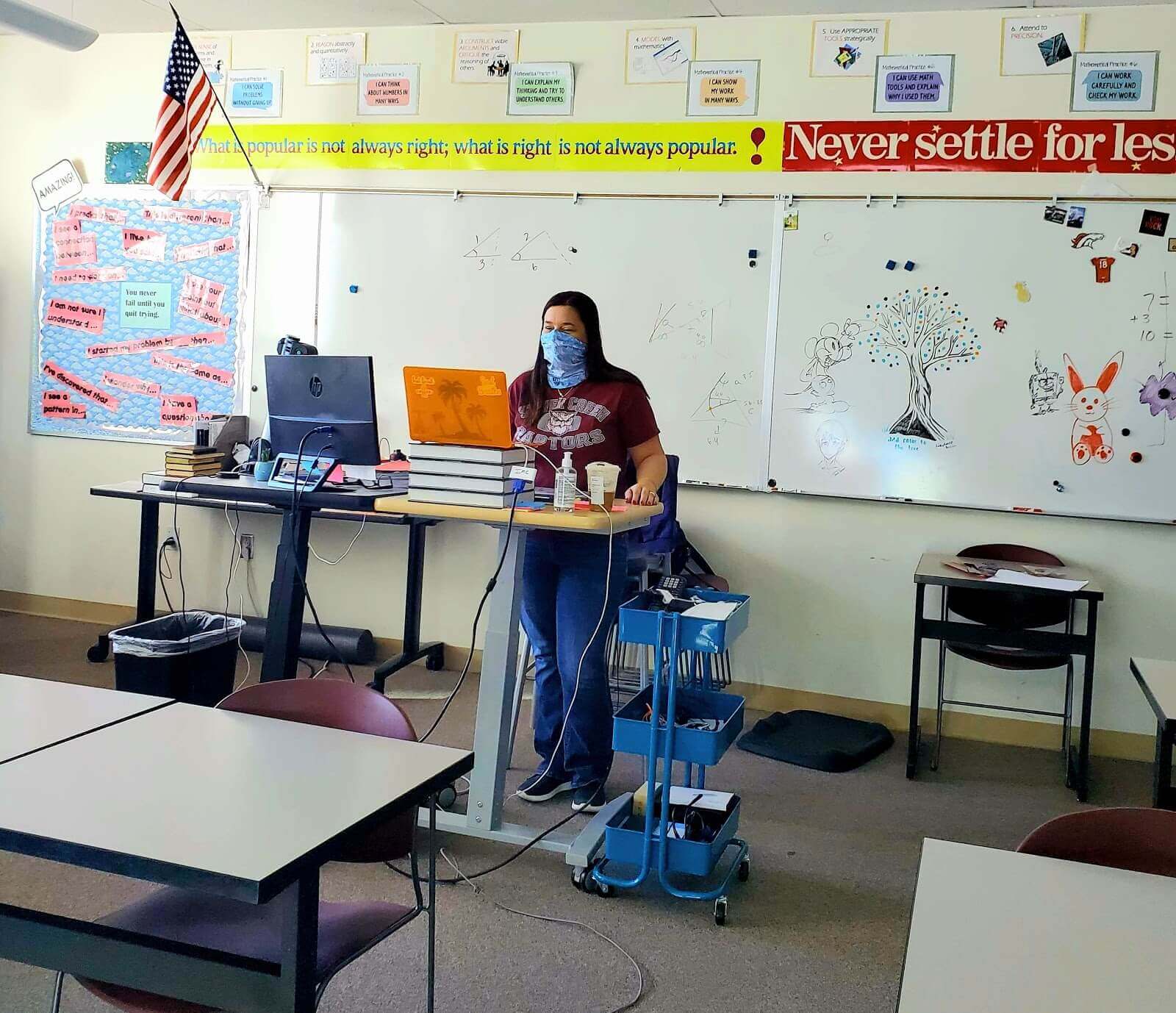
If one statement shows teachers’ feelings right now, it’s that one.
The source is Twitter user @AnnieK1221, responding to teacher-influencer @NicholasFerroni.
“This year has cemented for me how much I love teaching but how much I hate being a teacher. I can’t picture going back next year and giving it my all after the way we have all been treated. I don’t know what my future holds.”
She’s certainly not alone.
As the numbers show, the pandemic has led many teachers to leave the classroom, and many more may follow. At first glance, it may look like this crisis was borne out of the pandemic.
Truthfully, the root cause and potential solutions to the teacher retention crisis lie outside of the events of the past year.
The data tells a story, and it’s a scary one
Recent studies show the pandemic has educators reconsidering their careers. What specifically about the pandemic is pushing them out?
Horace Mann Educators Corporation reports:
- A quarter of teachers surveyed are considering leaving or retiring
- Over half do not feel secure in their districts’ safety precautions
- 60% do not enjoy the job as much as they used too
A more recent Edweek piece revealed that the number of New York educators who left their jobs by August of 2020 was up by 75 percent over 2019. In this group, 43% cited COVID-19 as their main reason for leaving.
There are also factors in some states that may have skewed retention numbers during the year.
For example, Texas teachers face a penalty, including a teaching license suspension, if they resign late summer or mid-school year. These penalties may keep teachers around until year’s end, when there could be more retirements and resignations.
Though teachers may cite the pandemic for leaving, factors leading to a retention crisis were revealed by the pandemic more than caused by it.
Another trend sped up by the pandemic
Unfortunately, conditions were already in place to drive teachers out of the profession.
Educators have already faced excessive demands on their time and too little support as they entered the job. Professional development initiatives too often ignored coaching and relationships in favor of an impersonal one-to-many model.
While these issues were stressful to teachers, the rewards likely balanced out the costs.
Then, the pandemic forced everyone into a no-win situation.
Superintendents had to follow state policies about shutting down schools. Building administrators had to follow district policies about remote and hybrid schedules. Teachers had to follow building policies about student participation, attendance and other daily aspects of the job.
These often well-intentioned decisions made the difficult job of teaching feel impossible.
The best parts of teaching, like building relationships and teaching dynamic lessons in class, were removed or obscured. The hard parts of the job got even worse. With this mix, teachers may be compelled to quit.
The pandemic has revealed how you can “love teaching” but “hate being a teacher.”
As of now, professional development in many schools leads to diminished levels of autonomy, mastery, and purpose, all essential for employee motivation. A report from the Economic Policy institute showed that only 11 percent of teachers had a significant say on their professional development, about 25 percent take college classes related to teaching, and less than a third found their professional learning “very useful.”
As teachers return to the classroom after the most draining year of their careers, these supports will not make teachers more likely to stay.
Can a new way of coaching be the answer?
If the pandemic ignited the kindling of a teacher retention crisis, then a new focus on relationships and coaching may just help extinguish the flames.
Instead of an impersonal top-down approach, leaders must prioritize relationships and embrace a solid coaching philosophy that supports that.
What if it could start with a commitment to a better culture? One that helps teachers and students feel supported and empowered in facing their challenges. When all levels within a school are encouraged to participate in coaching, relationships flourish and educators know they are valued and heard.
To embrace this culture, it could be defined in three stages that build upon one another:
- Set a cultural foundation: Set a trusting foundation of stronger relationships between students and teachers, as well as teachers and administrators, through regular, unstructured conversations that propel ideas and new ways of learning forward.
- Make connecting regularly a priority: Get the whole school to regularly make connections with intention through ongoing meaningful discussion that strengthens relationships, builds esteem and provides opportunities for reflection and growth.
- Overcome challenges to succeed: Encourage teachers to coach each other on the complex challenges they are facing. Help them optimize through observation, whether in-class or online so they can reach their full potential.
This would enable teachers to have a say in their professional learning. They capitalize on skills and improve areas of weakness. They find meaning through supporting their colleagues and students.
The pandemic has made many teachers and students feel more alone than ever.
Relationships have been greatly strained by masks and screens. Crowded, humming hallways went silent.
If disconnection got us here, we think a commitment to relational coaching can help us overcome it.